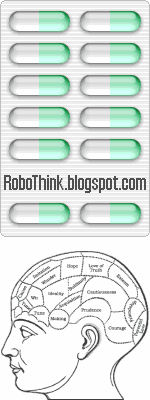Human Brain Hubris
 Human brains are walnut-shaped but dolphin brains are nearly spherical -- so in terms of volume, side views (or sagittal sections) are misleading. If you've seen a dolphin brain in a museum you may have noticed that the neocortex appears to be even more convoluted than a human brain. Dolphin researchers have found that one hemisphere can sleep while the other is awake. The brain of a bottle-nosed dolphin is heavier than a human brain, but neuroscientists say that the important factor is the ratio of brain weight to body weight. Dolphins have a larger volume of body fat for insulation than humans. There are some small rodent species which have an even higher ratio than humans. The tree shrew has the largest brain to body ratio of all mammals (see: Is Bigger Always Better?).
Human brains are walnut-shaped but dolphin brains are nearly spherical -- so in terms of volume, side views (or sagittal sections) are misleading. If you've seen a dolphin brain in a museum you may have noticed that the neocortex appears to be even more convoluted than a human brain. Dolphin researchers have found that one hemisphere can sleep while the other is awake. The brain of a bottle-nosed dolphin is heavier than a human brain, but neuroscientists say that the important factor is the ratio of brain weight to body weight. Dolphins have a larger volume of body fat for insulation than humans. There are some small rodent species which have an even higher ratio than humans. The tree shrew has the largest brain to body ratio of all mammals (see: Is Bigger Always Better?).
Both whales and dolphins can communicate with each other through intricate patterns of sound. So far, the nature of their communication system is not fully understood by PhD-grade hominids.
Whale and elephant brains are considerably larger than human brains. Eric Chudler, an associate professor at the University of Washington, has compiled a page of Brain Facts and Figures, which includes a comparison of brain weights for a variety of species. Reported average brain weights differ from one academic source to another, but Eric Chudler has listed the textbooks he used to gather the figures. The following table shows a selection from the data:
| Species | Average Brain Weight (grams) |
|---|---|
| Sperm whale * | 7,800 |
| Elephant | 6,000 |
| Bottle-nosed dolphin | 1,500-1,600 |
| Adult human | 1,300-1,400 |
| Walrus | 1,020-1,126 |
| Gorilla | 465-540 |
| Chimpanzee | 420 |
"Nevertheless, during evolution, whales have converged upon very similar capacities and behaviours to those of primates, including a highly developed social structure, which tells us that there is more than one way to evolve a complex intelligence."References:
- (1) Lori Marino's research is reported in the Public Library of Science Biology journal: Molecular Insights into Human Brain Evolution.
- (2) The top image is based on Michigan State University's Human Brain Atlas and Dolphin Brain Atlas.
- Related blog article:
Mass Extinctions and Super-Predators
 The rate at which animal and plant species are becoming extinct has now surpassed that of earlier mass extinctions known only from the fossil record. Many familiar species are in danger. The usual explanation offered for previous mass extinctions has been asteroid or meteor impacts, but there's a new theory: genetic mutations that lead to super predators. And in the current mass extinction human beings seem to act like super-predators.
The rate at which animal and plant species are becoming extinct has now surpassed that of earlier mass extinctions known only from the fossil record. Many familiar species are in danger. The usual explanation offered for previous mass extinctions has been asteroid or meteor impacts, but there's a new theory: genetic mutations that lead to super predators. And in the current mass extinction human beings seem to act like super-predators.